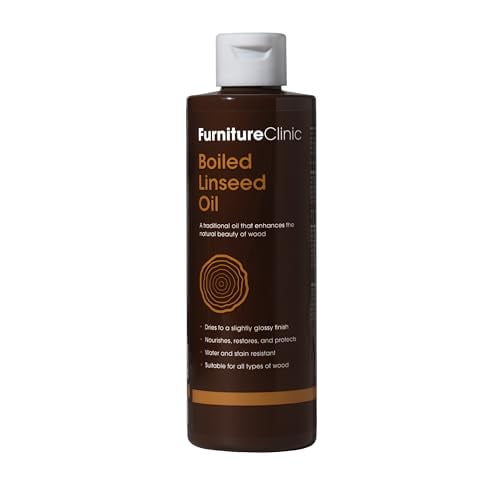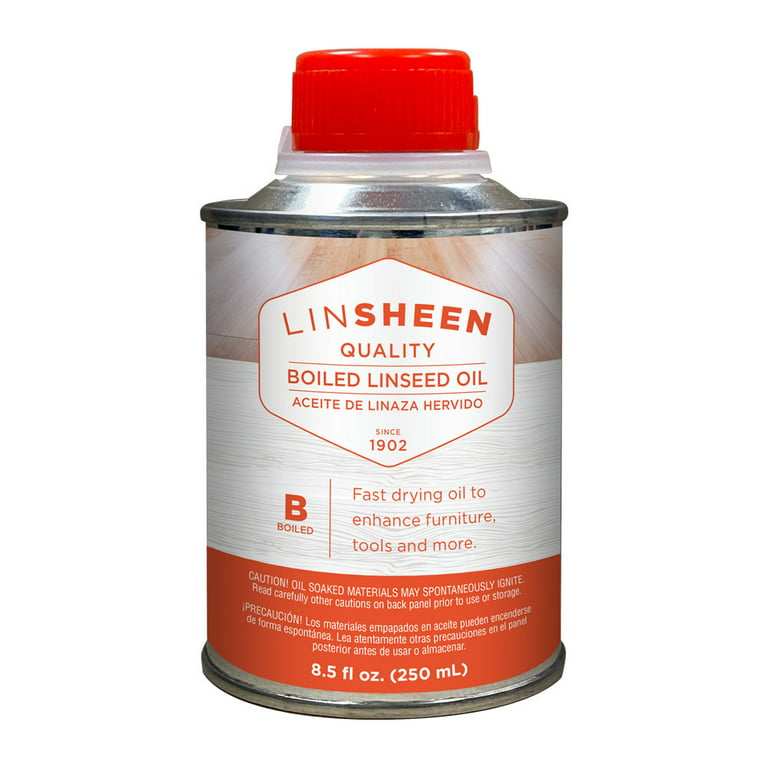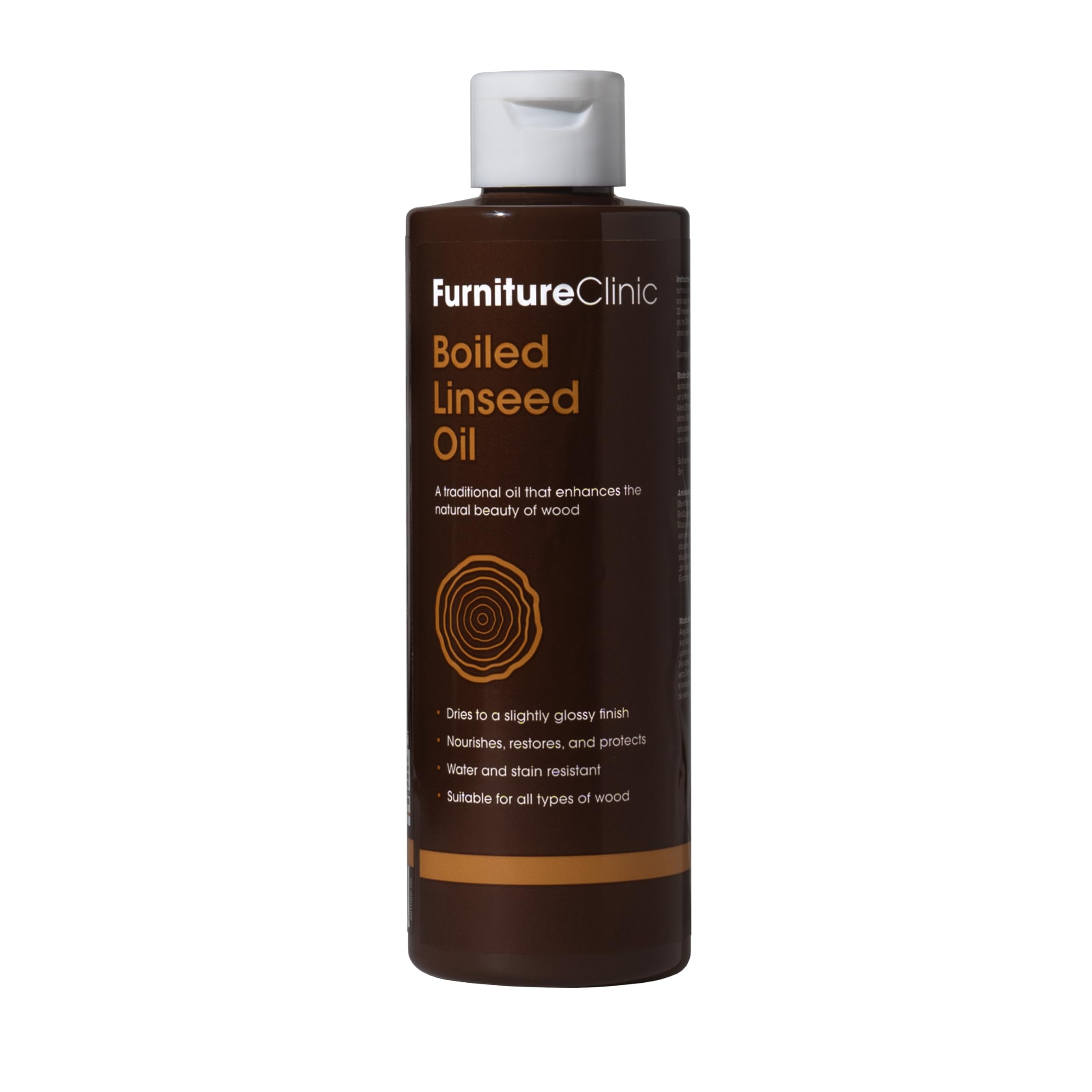Linseed oil is a popular choice for preserving and enhancing the natural beauty of wood. It nourishes and protects the wood, providing a durable and long-lasting finish.
Additionally, linseed oil brings out the wood’s grain and adds a warm, natural sheen.

Credit: www.walmart.com
The Benefits Of Linseed Oil For Wood
Linseed oil for wood provides natural protection and enhances the beauty of the wood grain. It penetrates deeply, nourishing the wood and creating a durable, moisture-resistant finish. This eco-friendly option also offers UV protection, making it a popular choice for preserving and maintaining wood surfaces.
Wood is a timeless and versatile material used in a wide range of applications, from furniture to flooring. However, over time, wood can lose its luster, become dull, and even succumb to moisture damage. That’s where linseed oil steps in as a reliable solution. Rich in natural properties, linseed oil offers several benefits that enhance the beauty and durability of wood. Let’s dive deeper into some of the key advantages of using linseed oil for wood.
Enhancing Wood Grain
One of the most remarkable benefits of linseed oil is its ability to enhance the natural beauty of wood grain. When applied to wood surfaces, linseed oil seeps deep into the wood, accentuating the unique patterns and textures of the grain. The oil acts as a natural highlighter, bringing out the inherent richness and depth of the wood. The result is a visually stunning finish that adds character and charm to any wooden piece.
Restoring Dull Surfaces
Over time, exposure to sunlight, moisture, and general wear can leave wood looking lackluster and lifeless. Fortunately, linseed oil is an excellent choice for restoring dull wood surfaces. Its unique composition allows it to penetrate deeply into the wood, revitalizing its appearance. The oil nourishes the wood fibers, replenishing any lost natural oils and bringing back the original shine and vibrancy. By using linseed oil, you can breathe new life into worn-out wooden furniture or floors, restoring them to their former glory.
Protecting Against Moisture and Wear
Wood is vulnerable to moisture damage, which can lead to swelling, warping, and rotting. Additionally, wear-and-tear can cause the wood to become brittle and weak. Linseed oil offers exceptional protection against both moisture and wear. When applied to wood, the oil forms a protective barrier that prevents moisture from seeping in, safeguarding the wood against damage. Moreover, linseed oil’s natural drying properties create a hard and durable surface, increasing the wood’s resistance to wear and tear. By using linseed oil, you can extend the lifespan of your wooden pieces while keeping them looking beautiful for years to come.
In conclusion, linseed oil offers a range of benefits that make it an ideal choice for preserving and enhancing wood. Its ability to enhance wood grain, restore dull surfaces, and protect against moisture and wear make it a must-have for anyone looking to maintain the beauty and durability of wooden furniture or flooring. So, if you want your wood to shine with timeless beauty, consider using linseed oil as your go-to wood treatment.
How To Apply Linseed Oil
Linseed oil is a popular choice for wood finishing due to its numerous benefits. It enhances the beauty of the wood grain, provides protection against moisture, and creates a smooth and durable finish. In this section, we will guide you through the process of applying linseed oil to your wood projects, ensuring a professional and long-lasting result.
Preparing The Wood Surface
Before applying linseed oil, it’s crucial to properly prepare the wood surface to ensure optimal absorption and adhesion. Follow these steps:
- Start by sanding the wood with fine-grit sandpaper to ensure a smooth and clean surface.
- Remove any dust or debris using a tack cloth or a soft brush.
- If the wood has any existing finish or coatings, such as paint or varnish, use paint stripper or sandpaper to remove them completely.
- Wipe the wood surface with a damp cloth to remove any remaining residue.
- Allow the wood to dry completely before proceeding to the next step.
Applying The Linseed Oil
Now that you have prepared the wood surface, it’s time to apply the linseed oil. Follow these steps:
- Pour a small amount of linseed oil into a clean container or directly onto a cloth.
- Apply a thin and even coat of linseed oil onto the wood surface using a brush, cloth, or foam applicator.
- Make sure to cover the entire surface, including the edges and corners.
- If desired, you can apply multiple coats of linseed oil, allowing each coat to dry before applying the next.
- Reapply linseed oil to any dry or absorbent areas until the wood no longer absorbs more oil.
Allowing For Drying And Curing
After applying linseed oil, it’s important to allow sufficient time for drying and curing. Follow these guidelines:
- Leave the wood project in a well-ventilated area to air dry for at least 24 hours.
- Avoid exposing the wood to excessive heat or direct sunlight during this drying period.
- Once the linseed oil has dried, the surface may still feel slightly tacky. This is normal.
- Continue to let the wood project cure for several days or even weeks, depending on the environmental conditions.
- During the curing process, avoid placing any objects on the wood surface to prevent imprints.
By following these steps for applying linseed oil, you can achieve outstanding results and enhance the beauty and durability of your wood projects.
Types Of Linseed Oil
Linseed oil is a popular wood finish known for its natural, protective, and enhancing properties. There are various types of linseed oil available, each with its unique characteristics and applications, making it essential to understand the differences between them. This article will explore the three main types of linseed oil: raw linseed oil, boiled linseed oil, and polymerized linseed oil.
Raw Linseed Oil
Raw linseed oil is the purest form of linseed oil, extracted from flax seeds through a cold-pressing process. It is left untreated and contains no additives, making it ideal for preserving the natural beauty of wood. Raw linseed oil penetrates deep into the wood, providing excellent protection, moisture resistance, and enhancing the grain pattern. This type of linseed oil is often preferred for interior woodwork and antique furniture restoration due to its ability to maintain the wood’s original appearance.
Boiled Linseed Oil
Boiled linseed oil is raw linseed oil that has undergone a heating and oxygenating process, resulting in a faster drying time compared to the raw form. The boiling process creates a more durable finish, making it suitable for outdoor wood applications such as decks, garden furniture, and wooden boats. Boiled linseed oil provides a glossy finish and enhances the wood’s natural colors, making it a popular choice for woodworking projects that require a quicker drying time.
Polymerized Linseed Oil
Polymerized linseed oil is a further processed version of boiled linseed oil, which has been modified to accelerate the drying process even more effectively. By using additives or heating methods, the oil forms a durable, polymer-like layer when applied to wood surfaces. This type of linseed oil is commonly used for commercial and industrial wood finishes, as it provides exceptional water resistance, flexibility, and long-term protection against wear and tear.
Safety Precautions When Using Linseed Oil
When using linseed oil for wood, it is important to prioritize safety. Take precautions such as wearing protective gloves, working in a well-ventilated area, and disposing of any oily rags properly to avoid accidents or hazards.
Proper Ventilation
Ensure adequate ventilation when using linseed oil to prevent inhalation of fumes.
Disposal Of Linseed Oil-soaked Materials
Dispose of linseed oil-soaked material responsibly to avoid environmental hazards.
Avoiding Spontaneous Combustion
Prevent spontaneous combustion of linseed oil by properly storing rags or other materials.
Other Uses Of Linseed Oil
Discover the versatility of linseed oil beyond woodworking. Explore other uses of linseed oil, such as preserving leather, conditioning metal, and nourishing skin. Experience the wide-ranging benefits of this natural oil in various applications.
Artistic And Creative Applications
Linseed oil is widely used by artists due to its quick drying time and beautiful finish. It is commonly utilized in oil painting as a medium to mix with pigments for creating vibrant artworks.
Industrial And Commercial Uses
In industries, linseed oil is valued for its ability to provide a protective coating on various surfaces. It is commonly used in the production of wood finishes, varnishes, and sealants due to its durability and water-resistant properties.
Health And Nutritional Benefits
When consumed, linseed oil is a rich source of omega-3 fatty acids, which are essential for promoting heart health and reducing inflammation in the body. It is often used as a dietary supplement to improve overall well-being.

Credit: www.amazon.com

Credit: www.walmart.com
Frequently Asked Questions On Linseed Oil For Wood
What Does Linseed Oil Do To Wood?
Linseed oil enhances the appearance of wood, giving it a natural sheen. It also helps to protect the wood from moisture and creates a durable finish. Additionally, linseed oil can bring out the wood’s natural grain and color, making it an excellent choice for wood finishing.
What Are The Disadvantages Of Using Linseed Oil On Wood?
Using linseed oil on wood can attract dust, yellow over time, and takes a long time to dry, causing inconvenience.
What Is The Best Way To Apply Linseed Oil?
To apply linseed oil, use a clean cloth or brush, spread an even coat, let it soak, wipe off excess.
Does Linseed Oil Darken Wood?
Yes, linseed oil does darken wood, enhancing its natural color and grain. It penetrates the wood, giving it a rich and warm tone.
Conclusion
Incorporating linseed oil into your wood care routine can significantly enhance its durability and appearance. The natural and eco-friendly properties of linseed oil make it a popular choice for wood preservation. By nourishing and protecting the wood, linseed oil helps maintain its beauty for years to come.
Try linseed oil for your wood today.


